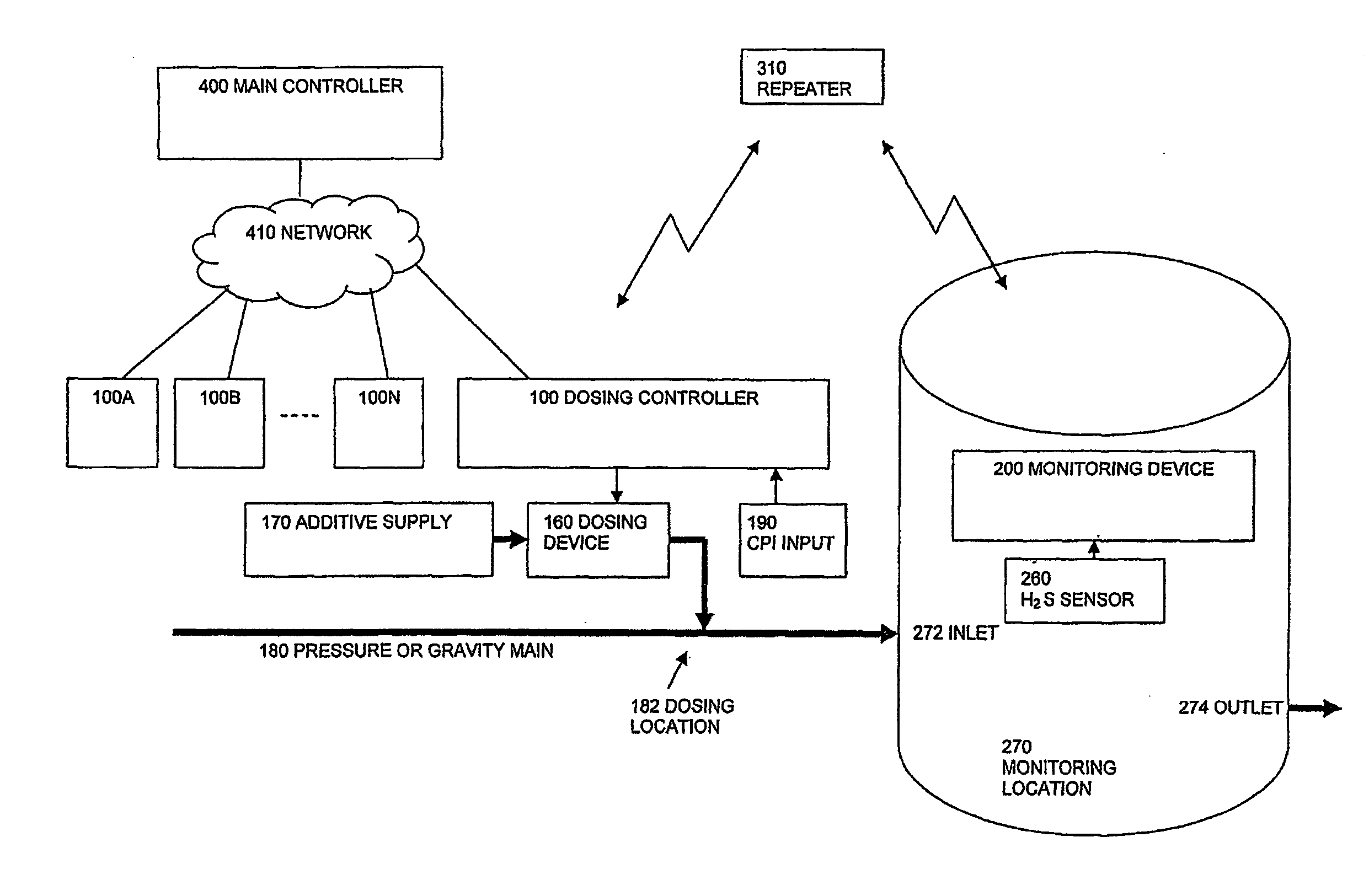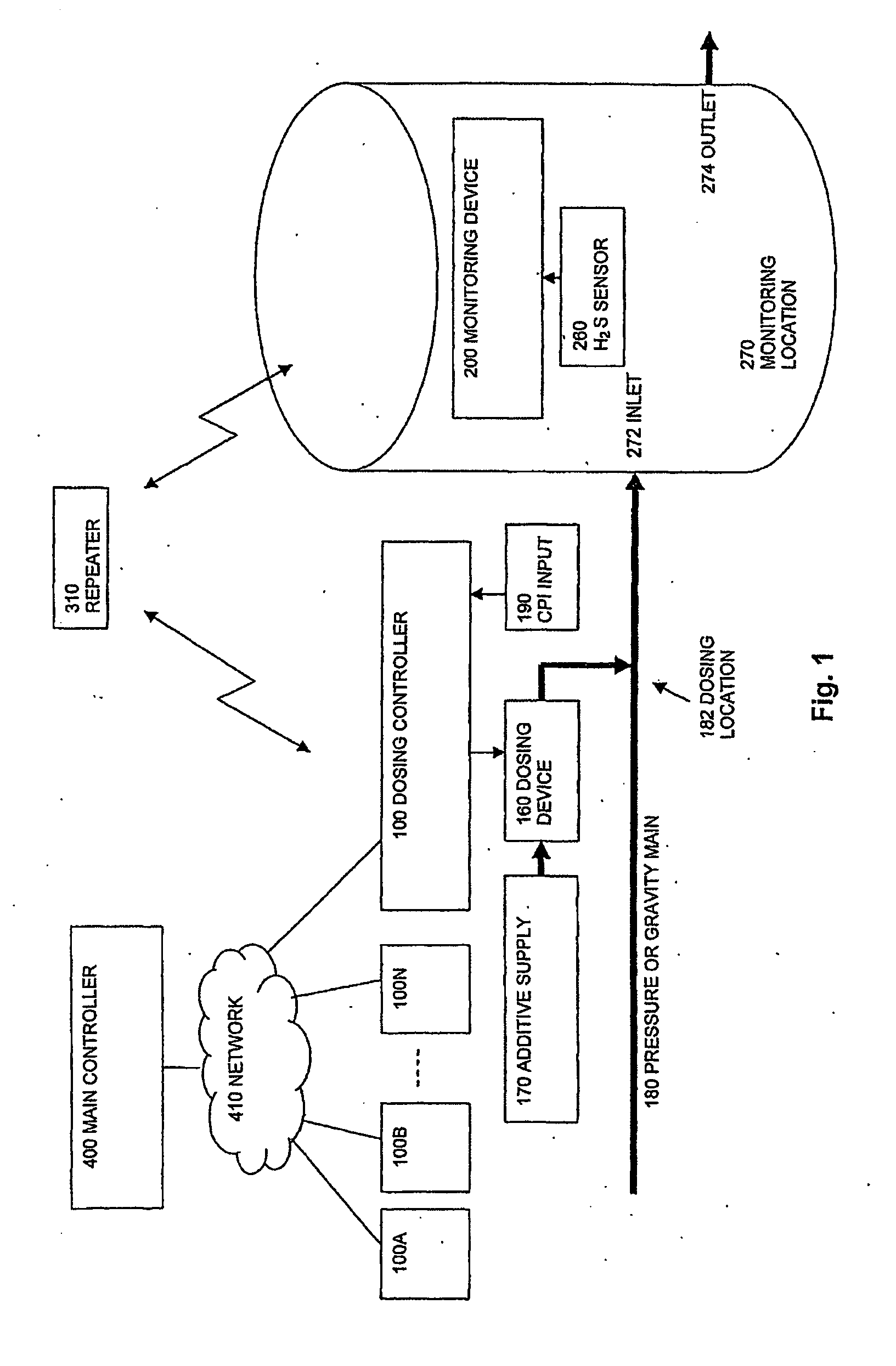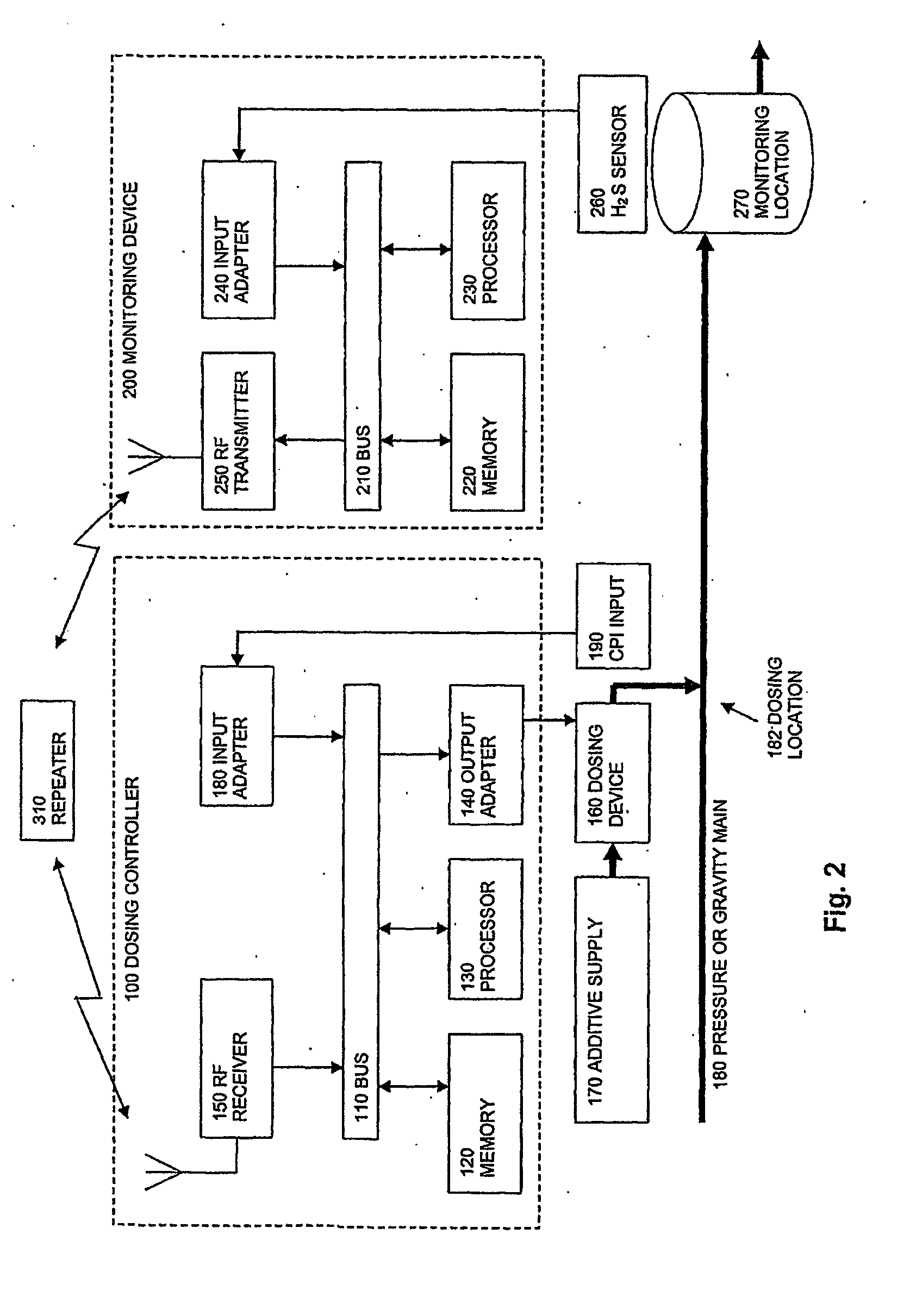System for Controlling the Concentration of a Detrimental Substance in a Sewer Network
a technology for sewer networks and detrimental substances, applied in the direction of treatment control/steering, water/sewage treatment by oxidation, ion exchangers, etc., can solve the problems of odour problems, high maintenance costs related to corrosion, and the focus on negative effects on treatment plants is getting more and mor
- Summary
- Abstract
- Description
- Claims
- Application Information
AI Technical Summary
Problems solved by technology
Method used
Image
Examples
Embodiment Construction
[0018]Reference will now be made to the detailed description of the preferred exemplary embodiment of the invention, as illustrated in the drawings. Wherever possible, the same reference numbers will be used throughout the drawings to refer to the same or like parts.
[0019]FIG. 1 is a schematic block diagram illustrating the principles of a system according to the invention
[0020]An overall purpose of the system is to control the concentration of a detrimental substance at particular locations in a sewer network.
[0021]The concentration of the detrimental substance is controlled by adding an additive to the sewer in the sewer network at a dosing-location 182. The dosing of the additive is based on an RF signal received at the dosing location, indicating a concentration of the detrimental substance at a downstream monitoring location 270. The dosing is advantageously also based on measurement signals indicating process variables denoted as critical process indicators (CPIs), acquired at...
PUM
| Property | Measurement | Unit |
|---|---|---|
| voltage | aaaaa | aaaaa |
| retention time | aaaaa | aaaaa |
| retention time | aaaaa | aaaaa |
Abstract
Description
Claims
Application Information
 Login to View More
Login to View More - R&D
- Intellectual Property
- Life Sciences
- Materials
- Tech Scout
- Unparalleled Data Quality
- Higher Quality Content
- 60% Fewer Hallucinations
Browse by: Latest US Patents, China's latest patents, Technical Efficacy Thesaurus, Application Domain, Technology Topic, Popular Technical Reports.
© 2025 PatSnap. All rights reserved.Legal|Privacy policy|Modern Slavery Act Transparency Statement|Sitemap|About US| Contact US: help@patsnap.com



